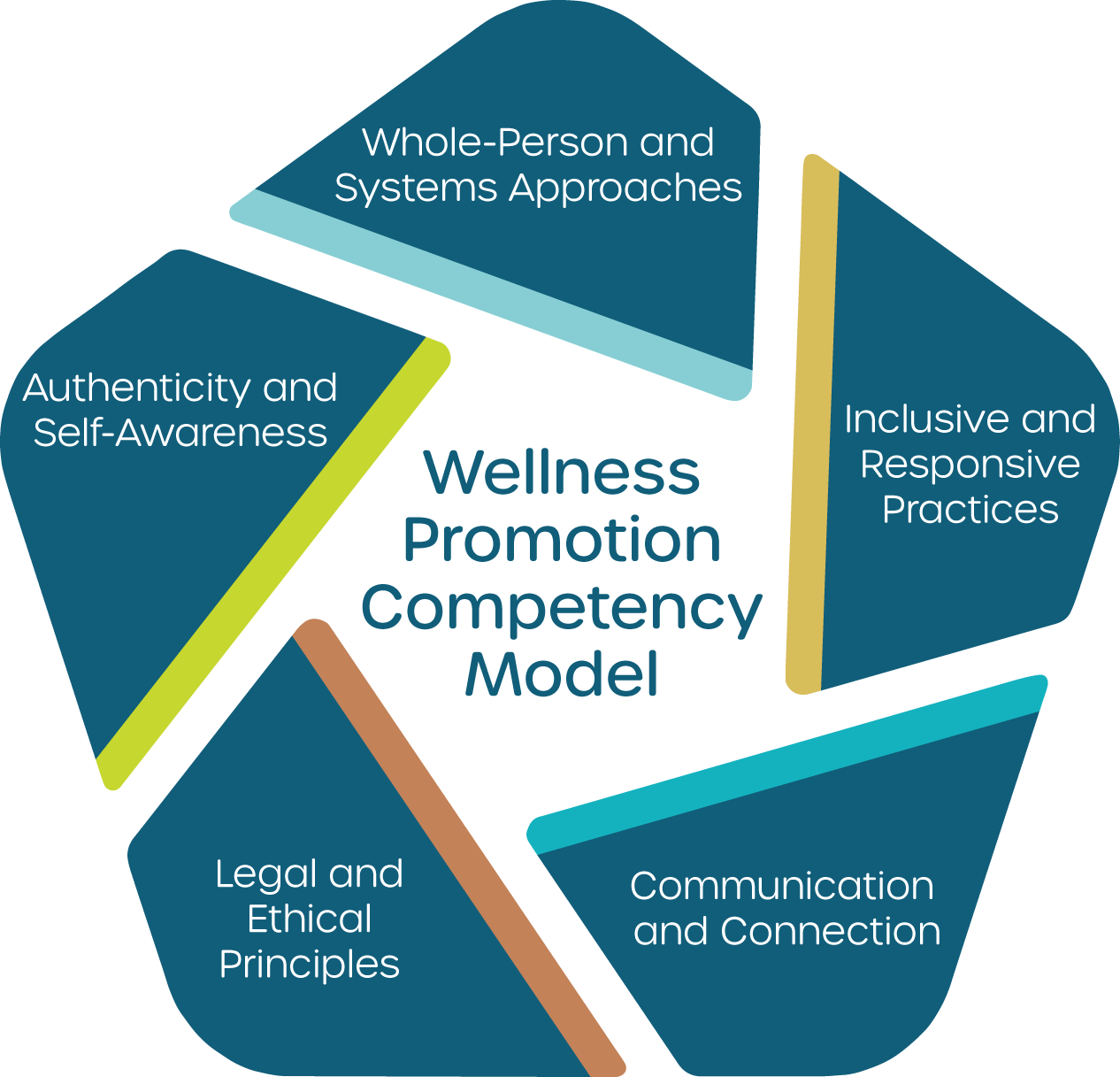Establishing Equitable Approaches for Inclusive Wellness Practices
Inclusive & Responsive Practices Domain
Course Description
Gain knowledge and skills to promote inclusive, multidimensional wellness, including strategies for enhancing emotional intelligence and cultural humility to minimize the effects of bias. You will engage in interactive learning to increase competence around social determinants of health, health equity, bias, and privilege to promote intentional multidimensional wellness approaches for individuals, groups, and communities.
The Wellness Alliance offers nine e-learning courses intentionally designed to cover foundational topics within the five domains of the Wellness Promotion Competency Model. The researched-based model serves as the standard for the Certified Wellness Practitioner (CWP) certification. This is the first of two courses supporting the Inclusive and Responsive Practices competency domain.
Learning Objectives
- Understand elements of emotional intelligence.
- Identify tools for assessment of personal bias.
- Use evidence-based resources to identify personal biases.
- Compare and contrast characteristics and/or uses of self-awareness and self-regulation practices.
- Describe how self-regulation can be used to minimize the effects of personal biases.
- Differentiate between equality and equity.
- Provide a detailed example of how a professional can integrate emotional intelligence, cultural humility, and health equity strategies into wellness practice.
- Explain how addressing systemic barriers can help move toward equity.
- Define intersectionality.
- List ways an individual’s privilege play a role in personal wellness.
- Identify ways in which unconscious bias can negatively impact an individual’s wellness.
- Explain the importance of sensitivity for various aspects of an individual’s identity as a wellness promotion professional.
- Describe how principles of cultural humility and equity play a role in demonstrating compassion, integrity, and respect for diverse individuals and groups.
Who Should Attend?
This course is applicable to individual practitioners as well as anyone who promotes wellness within organizations or communities. Discounts are available for educational institutions, associations, and organizations wishing to train a team or integrate courses into their curriculum. Contact [email protected] for details and rates.
Course Delivery
Within this self-paced interactive e-learning course, you’ll find knowledge checks or activities to enhance your learning as well as a variety of tools and resources you can apply in your work. Time to complete the course varies by learner, but we suggest planning for a total of three to five hours for each course to complete all the learning elements, including any application activities and self-reflections.

Register Now!
This Course Only
4-week access
Member: $195
Nonmember: $225
Two-Course Domain Package
6-week access
Member: $350
Nonmember: $405
Save with Our 9-Course Bundle!
24-week access
Member: $1,395
Nonmember: $1,620
More savings for Teams of 5+!
For information, email [email protected].
Continuing Education
This course is preapproved for 3.0 CE credits for: CWP (Category 1), NCHEC (Category 1 Advanced-Level CHES), and NBC-HWC (Activity ID: CEA-000249-4). View our CE Credit page for more details.
About the Wellness Promotion Competency Model


The model serves as the standard for the gold-standard
Certified Wellness Practitioner (CWP) certification.
Not a Member? Join the Wellness Alliance to receive access to free live and on-demand webinars, discounts on courses and events, wellness initiative assessments, tools, and more.

